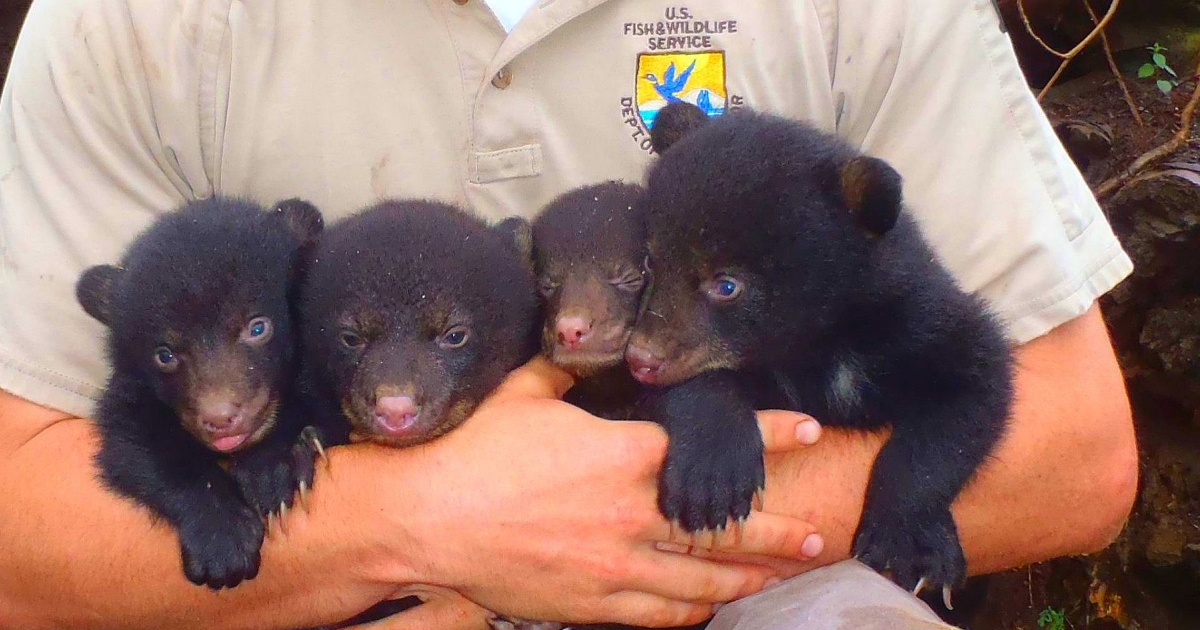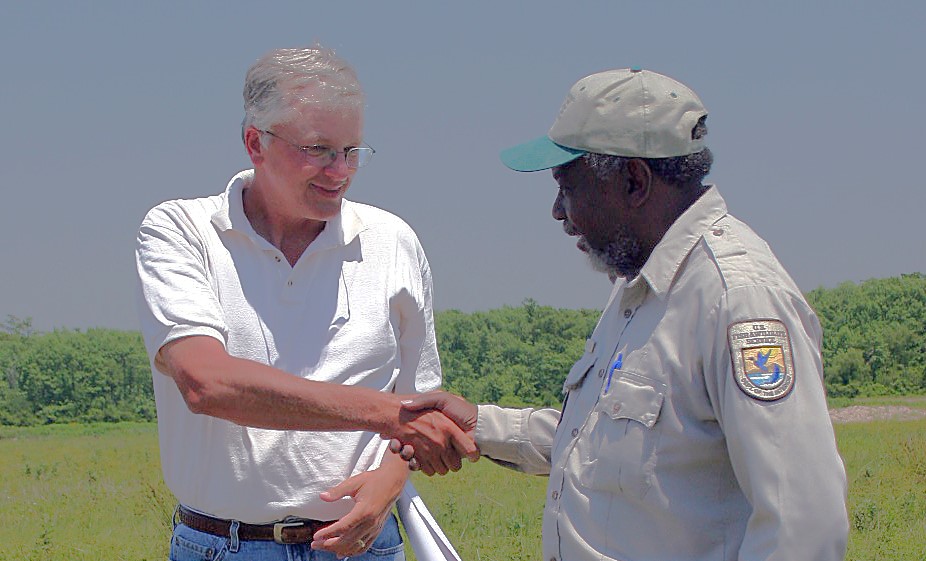Conservation efforts are critical to preserving our planet’s precious biodiversity, especially listed and at-risk species. However, different approaches to conservation practices often impede progress, inadvertently create conflict, and hinder the achievement of our shared environmental goals. This persuasive step-by-step guide aims to inspire and empower readers to embrace voluntary, collaborative conservation practices. Doing so will foster understanding, cooperation, and realization of mutual benefits for all stakeholders, ensuring working lands continue working and species conservation goals are achieved.
This guide is a living document. It was developed based on a wide array of case studies gathered by our coalition members and personal experiences. By no means is this guide intended to be prescriptive. It is simply “a guide” to provide some of the basic common factors present in many successful fish and wildlife conservation endeavors. Our intent is to help you spark new ideas and approaches that could be adapted and used to address a specific conservation context or the needs of landowners, local communities and any other stakeholders involved.
Before exploring the guide, itself, I would like to encourage all of you to provide any feedback you may have by leaving comments below. I would also like to encourage you to share any examples or case studies you may have that illustrate this voluntary approach. You can use this template [click here] to send us your example or you may use any other format that may be better for you and email it to leo@conservationwithoutconflict.org. You may not have a specific example; however, you can probably identify challenges you may have encountered and do not know where to start to overcome those challenges. If so, feel free to send us a note to the email address above. We will be more than glad to discuss those challenges and provide ideas and/or contacts to help you navigate them.
Effective conservation without conflict involves several important steps. These include:
Step 1: Embrace the Local Context
Embrace and understand the local context by carefully listening to local stakeholders. Dive deeply into the unique social, economic, cultural, political, and historical factors that shape the members and communities where conservation initiatives are taking place. Engage genuinely with individuals, local communities, indigenous groups, and stakeholders to establish trust and respect. It takes time. By showing genuine interest and understanding their needs, concerns, and aspirations, we can lay the foundation for fruitful collaboration.
Step 2: Empower Meaningful Engagement and Participation
Empower landowners, local communities, NGOs, government agencies, scientists, and other key stakeholders through meaningful engagement and participation early in the process. Identify and consult with any tribes whose interests may be impacted. Create spaces for open and safe dialogue, workshops, field trips and any other type of forums where everyone’s voices are heard. Make sure they are involved in the beginning of the scoping or planning processes and encourage active participation in decision-making processes, ensuring that their invaluable perspectives are incorporated into conservation strategies. By embracing collaboration, we can tap into a wealth of local knowledge and experiences, fostering a sense of ownership and shared land stewardship.
Step 3: Clarity of Purpose: Unite Around Shared Goals
Identify and be crystal clear about the shared goals of the initiative for the natural environment, the landowners, local communities, and any other stakeholder involved. Clarity of purpose provides direction, focus, and motivation, guiding our decisions and actions. With a clear purpose, we align our values, foster unity, cooperation, and productivity. Clarity of purpose empowers us to make purposeful choices and create a positive impact. Showcase the benefits of how conservation efforts can enhance and sustain local economies and livelihoods, and bolster ecosystem services. Emphasize the positive outcomes that can be achieved, such as improved health (physical and mental), sustainable income generation, and a resilient environment for future generations. By uniting around these shared aspirations, we can build strong alliances based on trust and overcome potential conflicts.
Step 4: Implement Adaptive Management Strategies
Adopt adaptive management strategies that promote flexibility, learning, and continuous improvement. Never stop learning. Conservation and sustainability are an evolving process, and we must be responsive to changing circumstances and emerging insights. Regularly monitor and evaluate the outcomes of our actions, seeking feedback from local landowners and communities and adjust the strategies and tactics accordingly. By embracing adaptability, we foster innovation, build trust, and ensure that our conservation approaches remain effective and relevant.
Step 5: Foster Sustainable Livelihoods and Conservation
Highlight the shared goals and benefits of working lands and integrate livelihood considerations into conservation planning and implementation. Acknowledge the dependence of landowners and communities on natural resources for their well-being and economic survival. Explore opportunities for sustainable income generation through sustainable resource management, outdoor activities, or any other nature-based business initiatives. By linking sustainable livelihoods with conservation efforts, we can create incentives for individuals and communities to actively support and engage in collaborative conservation activities.
Step 6: Build Capacity and Empower Landowners and Local Communities
Invest in capacity-building initiatives that empower landowners and local communities to take charge of conservation efforts. Provide training, education, and skills development programs that enhance their understanding of sustainable resource management. Encourage the formation of local groups and ensure their inclusion in decision-making processes. By empowering landowners and local communities, we foster a sense of ownership and land stewardship, ensuring the long-term success of collaborative conservation endeavors.
Step 7: Establish Collaborative Governance Mechanisms
Create very simple but inclusive and transparent governance mechanisms that actively involve all stakeholders in decision-making processes. This could be formal or informal. Clearly define the authorities, responsibilities, and expectations for each public and private partner. Collaborate with landowners, communities, businesses, government agencies, NGOs, and other relevant entities to develop joint partnerships. By sharing knowledge, decision-making power, resolving conflicts, and ensuring equitable distribution of responsibilities and benefits, we can create a harmonious and inclusive collaborative conservation framework.
Step 8: Cultivate Continuous Communication and Learning
Maintain constant open lines of communication with all stakeholders and establish feedback mechanisms that facilitate ongoing dialogue and learning. Be available. Regularly share information, updates, and progress reports regarding conservation activities to ensure there are no surprises. Promote sharing of information in formal and informal settings. Openly celebrate success. Openly acknowledge and learn from your mistakes. Actively involve landowners and communities in monitoring and data collection efforts, valuing their traditional knowledge and observations. Ensure that information is fully accessible, culturally appropriate, and delivered through various mediums to foster effective communication.
Conclusion: The Conservation without Conflict model is not only possible but necessary for the long-term sustainability of our planet’s biodiversity and the well-being of local communities. By embracing the local context, empowering engagement, uniting around shared goals, implementing adaptive management strategies, fostering sustainable livelihoods, building capacity, establishing collaborative governance, cultivating continuous communication, and building trust, we can achieve collaborative conservation that benefits us all and ensures working lands can continue to work. Let us join forces, build trust to overcome conflicts, and work together to create a sustainable and thriving future for our nation and its remarkable species.
By Leopoldo Miranda-Castro



